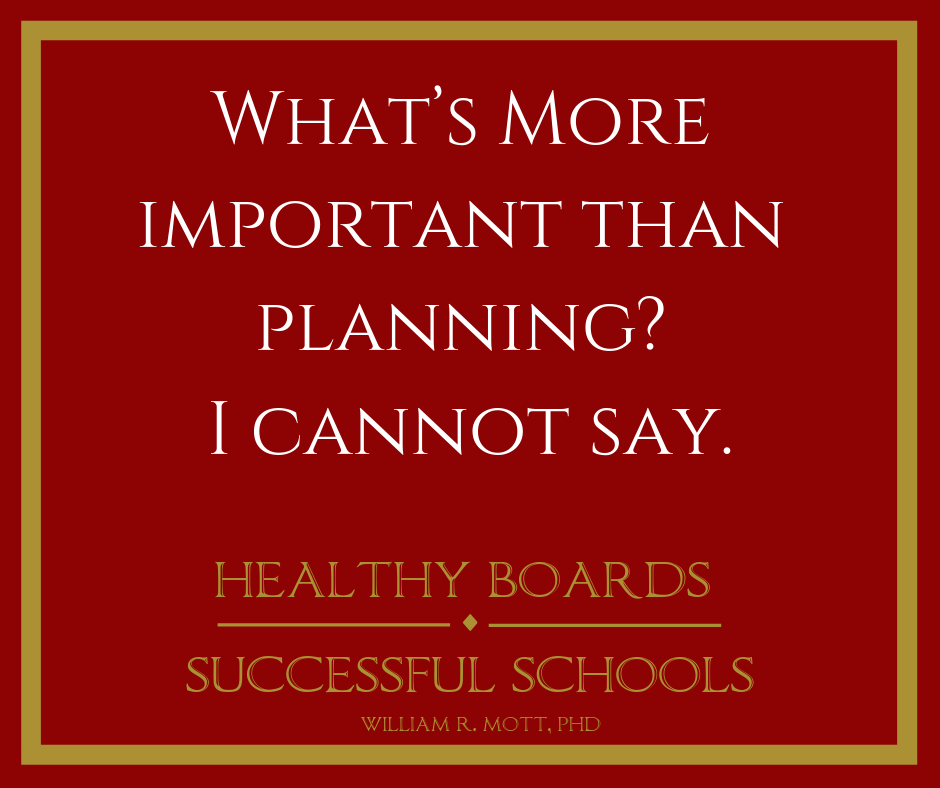Strategic plans are the foundation of every facet of the school. As a joint responsibility of the trustees and school leadership, such plans determine the path and direction that leads to healthy, successful schools.
It’s difficult for me to say which of the twenty-five chapters in my new book, Healthy Boards-Successful School, are the most important. But ranking near the top is Chapter 7: Creating the Template for Effective Strategic Planning.
I’ve been blogging about some dos and don’ts, and other essential roles and responsibilities of the board of trustees. But if this one thing isn’t done well then the long term sustainability of the school could be in jeopardy. We live in a time when getting somewhere as opposed to anywhere requires a “roadmap” that guide the direction of the school.
The everyday sustainability, and long term success of an independent or faith-based school can be directly tied to its ability to effectively and strategically plan. There are a number of paths to achieving success in strategic planning. But I offer a 14 stept approach that has been proven successful time and again. I’ll offer a snapshot of the first four steps here, but every step is in my book, along with guidance pertaining to virtually every facet of board and school leadership.
Step One: Begin with a Strategic Planning Retreat
Get away from the distractions, and think about including other senior leadership that have the skills and mindset to contribute to this process. Retreat attendees need to be able to speak AND to listen in a fresh environment that is conducive to exploring what the future of the school might include.
Step Two: Review the School’s Mission Statement.
Mission statements should remain as constant as possible and strategic plans should align with it. As the planning process unfolds, it may reveal that changes or alterations need to be made to the mission statement.
Step Three: Engage an Outside Facilitator
This ensures that each trustee and retreat attendee can fully engage with the planning process and listen closely to one another and meaningfully contribute to the discussion. The facilitator should be experienced in independent schools, the planning process, and have the skills to keep the group focused and on track.
Step Four: Engage in a Thorough Brainstorming Session that Includes a SWOT Analysis (Strengths, Weaknesses, Opportunities, Threats)
This discussion should be wide open with everyone contributing honestly and fully. Every idea should be considered. Good ideas can become great, while other ideas may be deemed unrealistic or untimely.
The magic is in the process – trustees and school leaders coming together to look at the possibilities and establish a vision and direction charting the school’s future. I say much more about strategic planning in my book. Every head of school and board chair should take a fresh look at this process and implement the changes and improvements necessary to secure the vitality and effectiveness of the planning process.
Copies of Healthy Boards-Successful Schools can be ordered at www.williamrmottphd.com.

